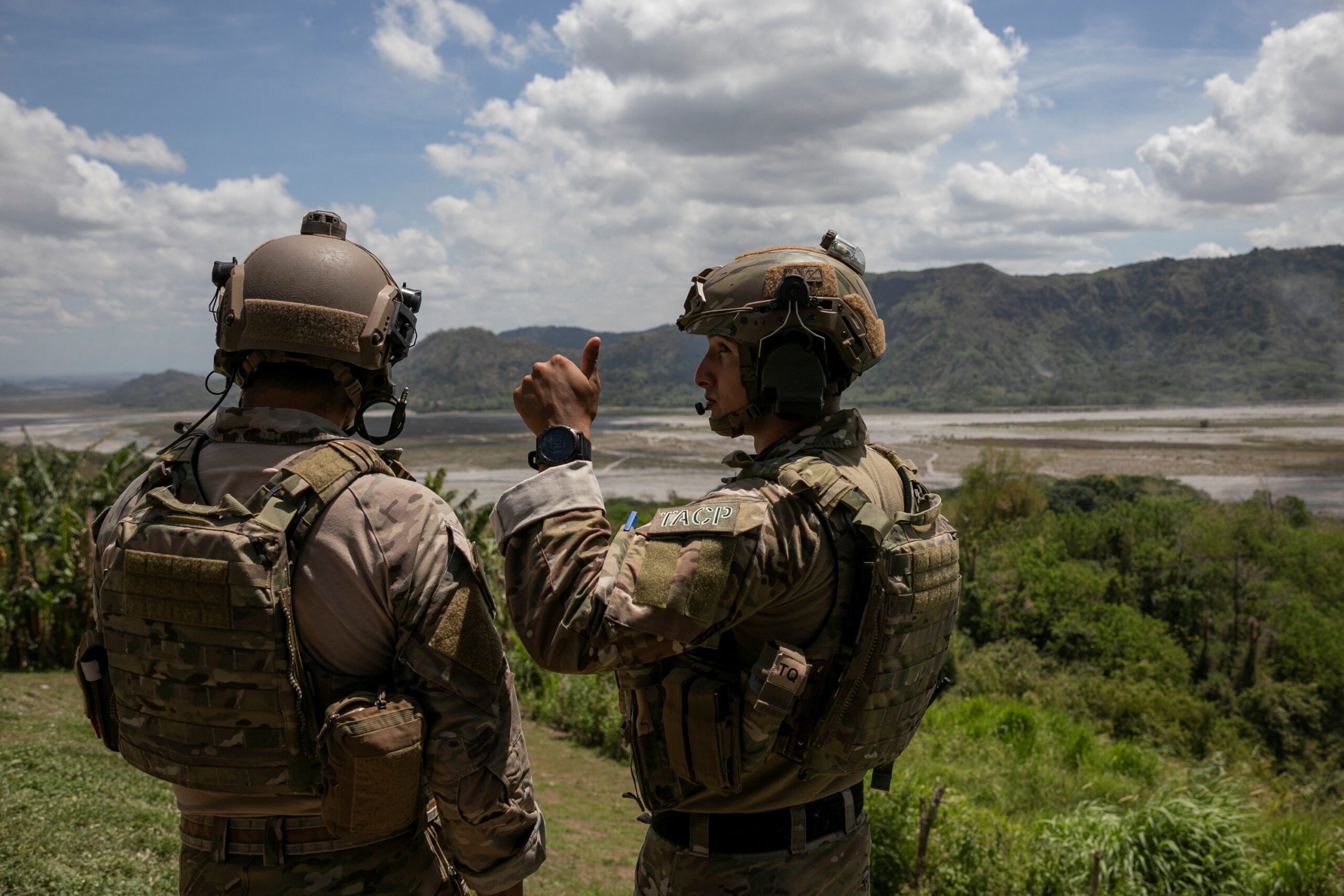SUMMARY
This is AI generated summarization, which may have errors. For context, always refer to the full article.

MANILA, Philippines – United States Ambassador to the Philippines MaryKay Carlson said on Monday, October 17, that the State Department has proposed allocating $100 million in foreign military financing for the Philippines as part of efforts to boost the Southeast Asian country’s defense modernization efforts.
The amount, if approved, would be more than double the approximately $40 million in foreign military financing the Philippines received in 2022.
Speaking to reporters during a roundtable on Monday, Carlson said the proposed funds are currently up for approval by the US Congress.
“The US State Department has now notified the Congress of its intent to make available to the Philippines $100 million in foreign military financing to be used for defense militarization…in conjunction with the ongoing consultations that we have discussed between our militaries throughout the year,” she said.

The Philippines has seen a drumbeat of high-level engagements with the US, with several senior officials, including State Secretary Antony Blinken and Defense Secretary Lloyd Austin, making visits to the country since 2021.
Fresh funding also comes after the Philippines earlier announced that it was pulling out of a deal to purchase Russian helicopters due to possible Western sanctions following Russia’s invasion of Ukraine.
In August, Philippine Ambassador to the US Jose Manuel Romualdez said the Philippines made an initial payment of some $38 million, but that it was “prudent” for the Duterte government to have called off the deal “because it can save us a lot of trouble.”
Carlson said the US was grateful for the Philippines’ decision.
“We were very grateful to the government of the Philippines for making the decision – especially in the wake of Russia’s illegal attack of unprovoked war in Ukraine – to cancel the helicopter deal,” she said.
The US envoy added that additional funding from Washington could also be used to offset the helicopter purchase that did not push through, but that it “would not dictate the modernization efforts within the (Philippine) Department of National Defense.”
Aside from purchasing US defense articles, funds could also be used to tap services and training.
‘New energy’
The boost in defense funding eyed for the Philippines underscores the marked improvement in ties seen under the new administration of President Ferdinand Marcos Jr. While his predecessor, former president Rodrigo Duterte, often expressed his dislike for America, Marcos has so far emphasized his desire to strengthen ties with the Philippines’ longtime ally.
US embassy Spokesperson Kanishka Gangopadhyay said the $100 million in foreign military financing eyed for the Philippines likewise represented “one small part of our commitment to deepen our security cooperation and modernize our alliance.”
“There is new energy in our engagement with the Philippines and a new optimism and confidence in the value of our alliance to both our nations,” he said.
In June, Ely Ratner, US assistant secretary of defense for Indo-Pacific security affairs, had expressed similar optimism that Philippine-US defense ties were on a “very strong trajectory.”
“There are real champions of the alliance, not only in the Philippines but in senior positions in the government, too. And that makes a big difference,” Ratner earlier said.
The proposed $100 million in foreign military financing, should it be approved, would only make one part of aid from the US and does not yet include funding from the US Department of Defense. – Rappler.com
Add a comment
How does this make you feel?
There are no comments yet. Add your comment to start the conversation.